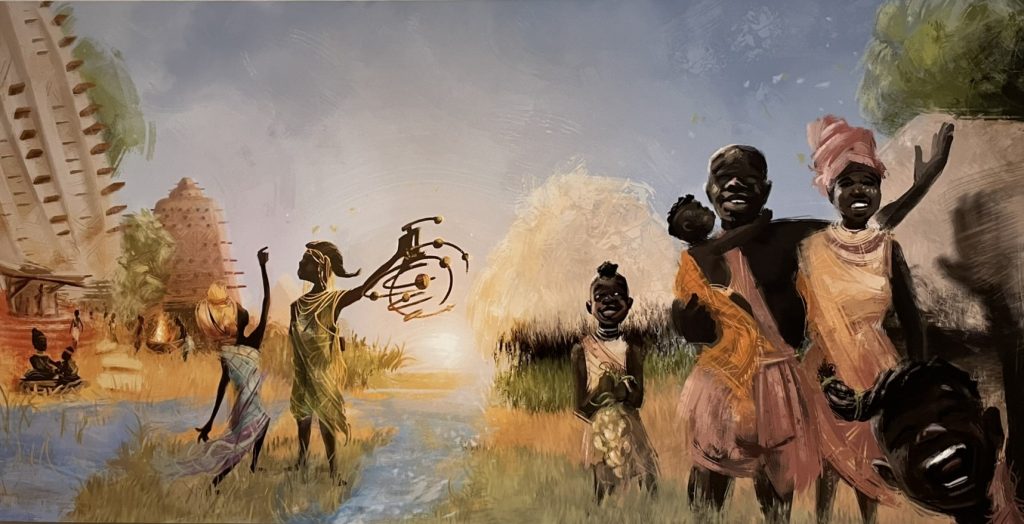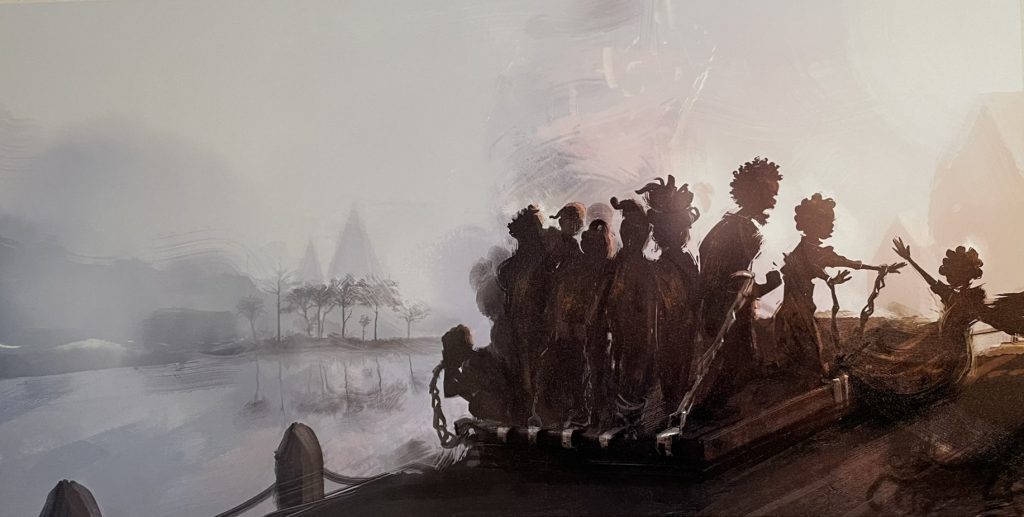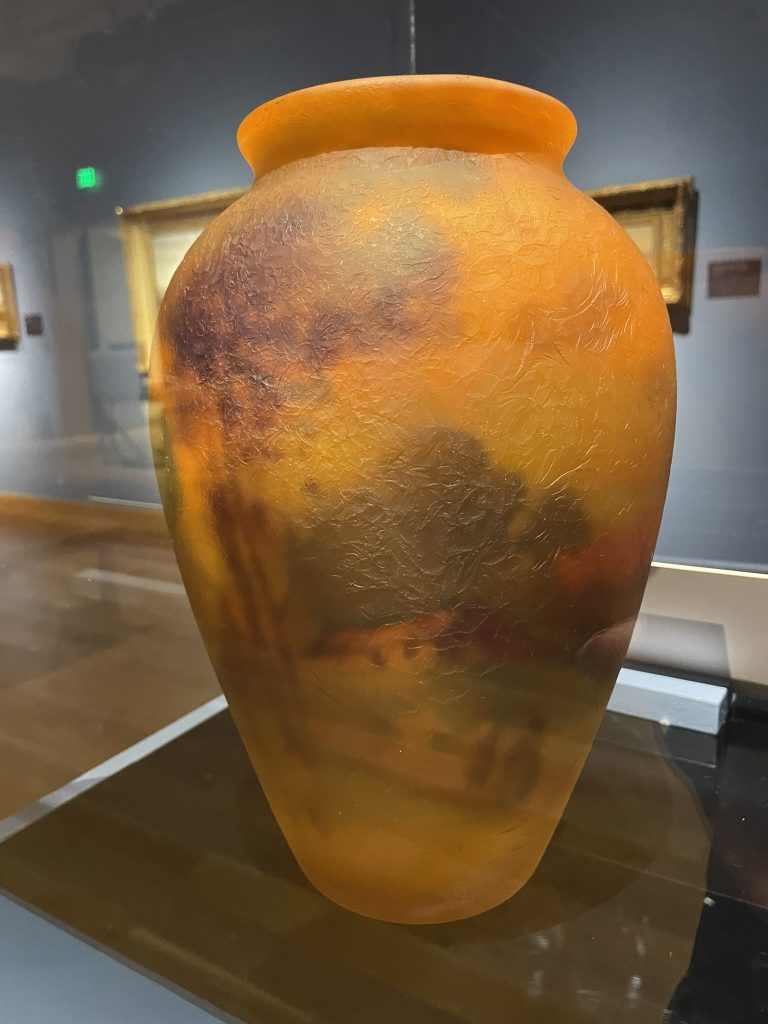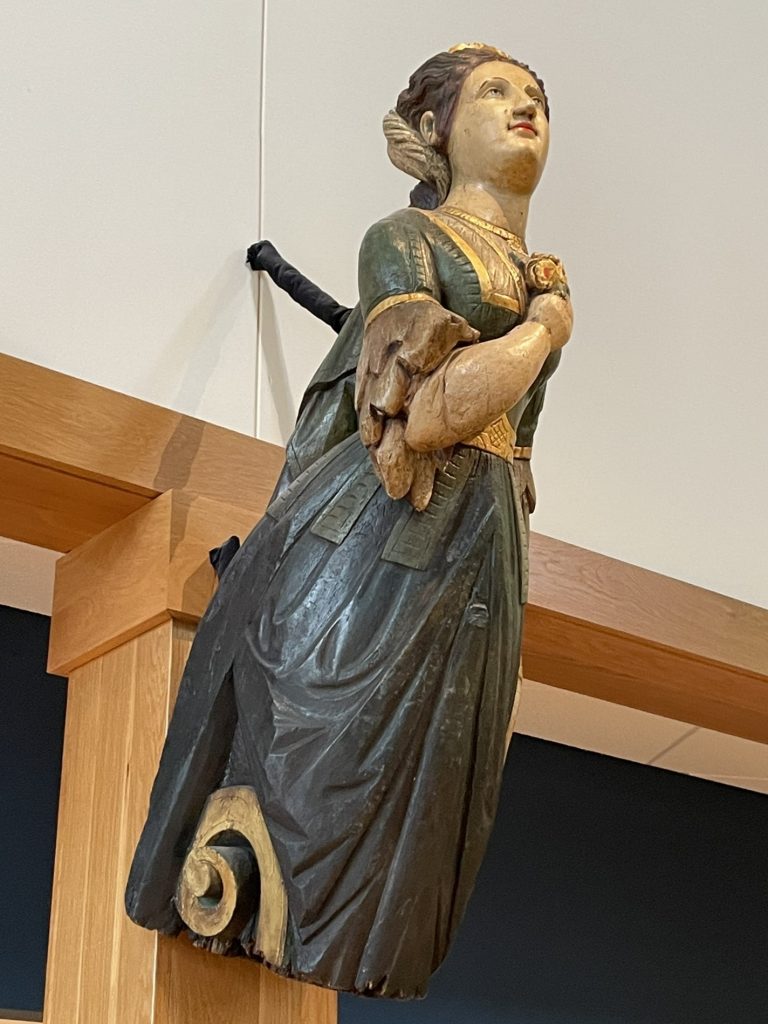
The Minnesota Marine Art Museum in Winona, Minnesota, (new state in the van!) features “great art inspired by water,” per their website. The museum was okay, but I’d argue not much of it was “great” art and several items had a dubious connection to water.
The museum is located on the banks of the Mississippi River, and as we were driving to it we got a glimpse of the mighty river. Everything on display was part of current exhibits, so a visit at another time would yield a completely different experience.
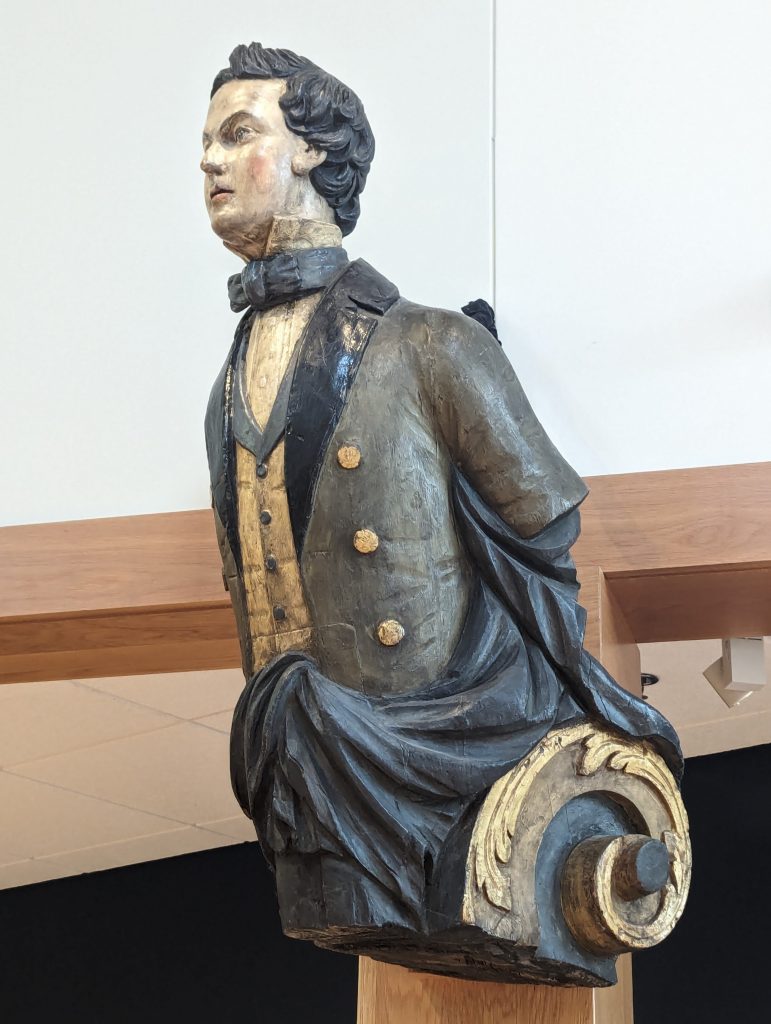
The exhibit Re/Framing The View: Nineteenth-century American Landscapes featured paintings from many lesser-known or regional artists, even though it did feature some big names, like Frederic Edwin Church, Albert Bierstadt, and George Inness. This exhibit also had some pressed leaves and decorative arts on display, which seemed to be unrelated to water to me.
Perusing the exhibit information on their website had some convoluted discussion regarding the role of women in art, but I still didn’t connect the dots.
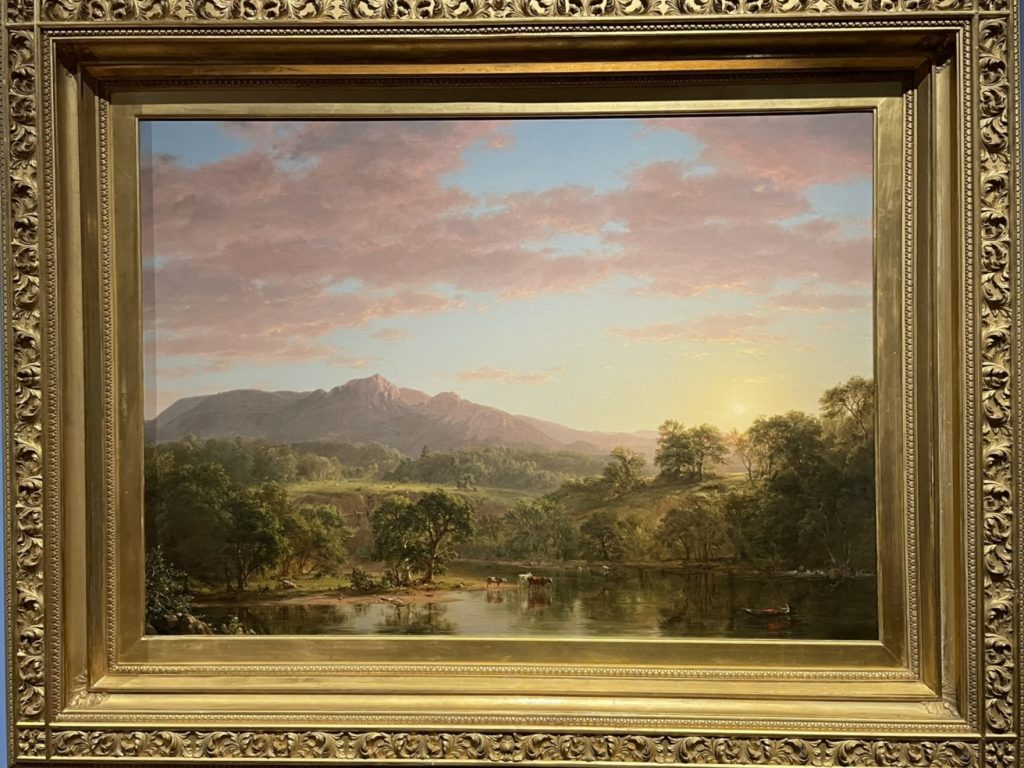
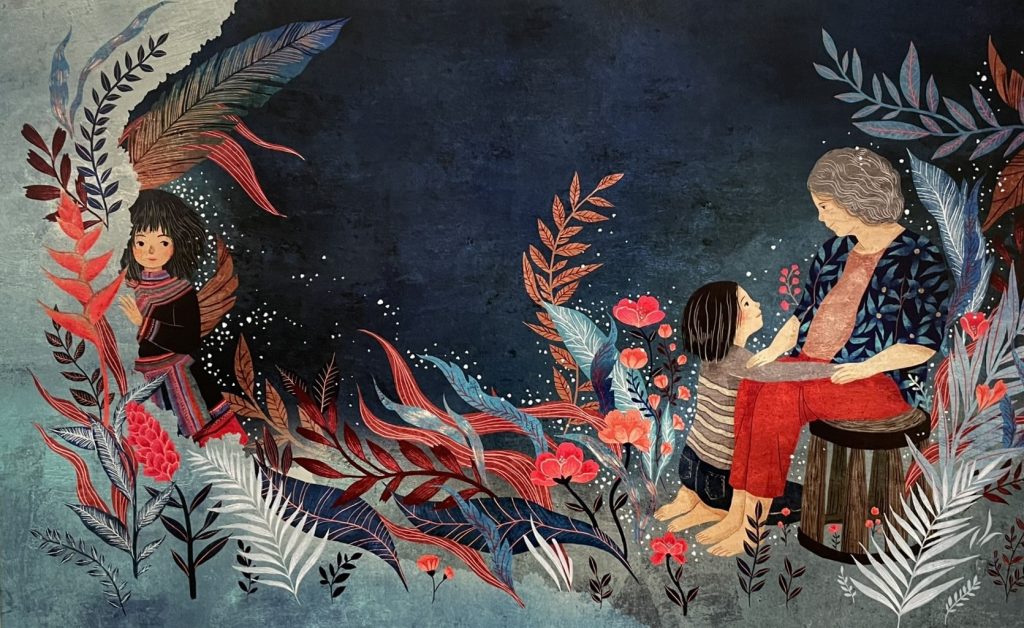
The Across a Wide Ocean: Remarkable Stories about the Origins of Identity exhibit featured large prints from two illustrated books, where “visitors can explore individual accounts of people born on, or transported over, the water, revealing universal wisdom about the origins of identity” (per their website). I really thought the illustrations featured from The 1619 Project: Born on the Water (pictured below; affiliate link) were powerful, but would have preferred to see originals rather than prints.
The absolute best item in the museum is our cover photo, Duchess, by Seth Casteel, 2012. Duchess is featured on the cover of Seth’s book, Underwater Dogs (affiliate link).
